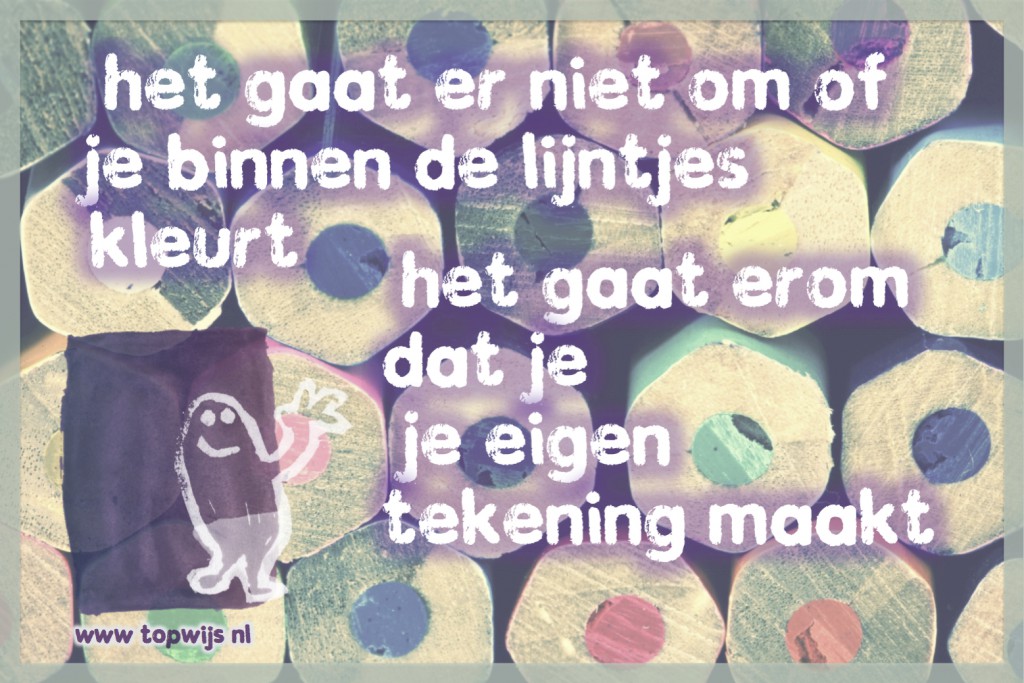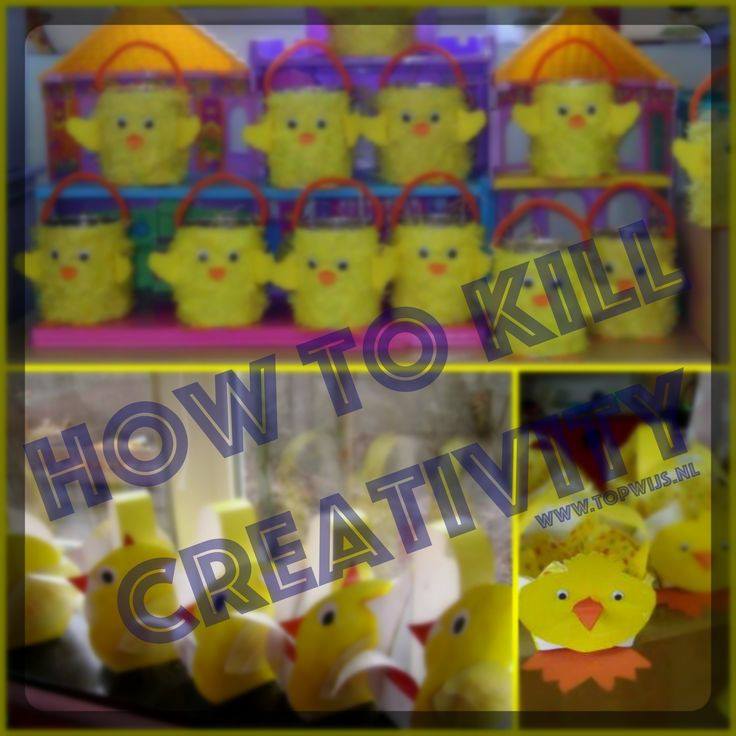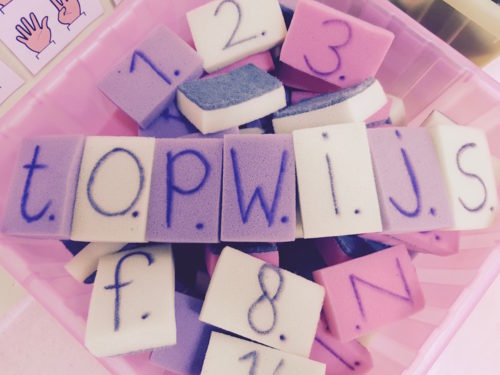Hoe je creativiteit de das om doet
De productiemachine draait weer op volle toeren de komende maanden, de paasmandjes zijn in aantocht. Die worden al weer snel gevolgd door de cadeau’s voor moederdag en vaderdag. Deze machine draait overigens ook van oktober tot januari altijd overuren: Eerst de paddestoelen (rood met witte stippen natuurlijk), die worden al weer snel gevolgd door de pietjes gemaakt van vouwcirkels, de mijters en natuurlijk de kerstbomen.
Helaas constateer ik deze drang naar uniformiteit ook tussen deze piekperioden in, waarbij kinderen gevraagd wordt te werken volgens een voorbeeld. De leerkracht heeft zitten zwoegen op mooie malletjes of voorbeelden van internet geplukt. Wordt de creativiteit zo niet de kop in gedrukt? Hoe haal je alles uit de kinderen? Bekijk onderstaande animatie (3 minuten) of lees het gedicht over “how to kill creativity”.
Download de Nederlandse vertaling
Onderstaande animatie geeft goed weer wat het werken volgens het idee van de leerkracht doet met de creativiteit van kinderen. Ik denk dat je je altijd kunt afvragen:
- Wat leert een kind van de activiteit?
- Hoe bouw ik meer ruimte voor initiatieven en ideeën in?
- Hoe kan ik kinderen helpen die vastlopen?
- Hoe zorg ik ervoor dat het het werk van het kind wordt en niet het werk naar het idee van de leerkracht?
Als alle kinderen dezelfde kip moeten maken, kunnen ze hun ei niet kwijt.
Betekent dit dat je nooit ideeën mag aandragen? Nee, natuurlijk is het belangrijk om kinderen in aanraking te laten komen met nieuwe materialen of technieken. Een paasmandje kun je ook maken door verschillende materialen neer te leggen en te ontdekken wat hiervan de mogelijkheden zijn. En moet een mandje altijd geel en groen zijn?
Animatie “A little boy”
De tekst bij deze animatie vind je onderaan de pagina.
“Bloemen zijn rood” door Gerard van Maasakkers
The little boy
Once a little boy went to school.
One morning when the little boy had been in school awhile,
The teacher said: “Today we are going to make a picture.”
“Good!” thought the little boy.
He liked to make all kinds;
Lions and tigers, Chickens and cows, Trains and boats;
And he took out his box of crayons and began to draw.
But the teacher said, “Wait! It is not time to begin!”
And she waited until everyone looked ready.
“Now,” said the teacher, “we are going to make flowers.”
“Good!” thought the little boy, He liked to make beautiful ones.
With his pink and orange and blue crayons.
But the teacher said “Wait! And I will show you how.”
And it was red, with a green stem.
“There,” said the teacher, “now you may begin.”
The little boy looked at his teacher’s flower.
Then he looked at his own flower.
He liked his flower better than the teacher’s.
But he did not say this.
He just turned his paper over, And made a flower like the teacher’s.
It was red, with a green stem.
On another day when the little boy had opened The door from the outside all by himself, The teacher said: “Today we are going to make something with clay.”
“Good!” thought the little boy; He liked clay.
He could make all kinds of things with clay:
Snakes and snowmen, Elephants and mice, Cars and trucks
And he began to pull and pinch his ball of clay.
But the teacher said, “Wait! It is not time to begin!”
And she waited until everyone looked ready.
“Now,” said the teacher, “we are going to make a dish.”
“Good!” thought the little boy, he liked to make dishes.
And he began to make some that were all shapes and sizes.
But the teacher said “Wait! And I will show you how.”
And she showed everyone how to make one deep dish.
“There,” said the teacher, “now you may begin.”
The little boy looked at the teacher’s dish;
Then he looked at his own.
He liked his better than the teacher’s,
but he did not say this.
He just rolled his clay into a big ball again
And made a dish like the teacher’s.
It was a deep dish.
And pretty soon the little boy learned to wait,
And to watch.
And to make things just like the teacher.
And pretty soon he didn’t make things of his own anymore.
Then it happened that the little boy and his family moved to another house, in another city,
And the little boy had to go to another school.
The very first day he was there, the teacher said:
“Today we are going to make a picture.”
“Good!” thought the little boy.
And he waited for the teacher to tell what to do.
But the teacher didn’t say anything.
She just walked around the room.
When she came to the little boy
She asked, “Don’t you want to make a picture?”
“Yes,” said the little boy.
“What are we going to make?”
“I don’t know until you make it,” said the teacher.
“How shall I make it?” asked the little boy.
“Why, anyway you like,” said the teacher.
“And any color?” asked the little boy.
“Any color,” said the teacher.
“If everyone made the same picture, and used the same colors,
How would I know who made what, and which was which?”
“I don’t know,” said the little boy.
And he began to make pink and orange and blue flowers.
The little boy – Helen Buckley



